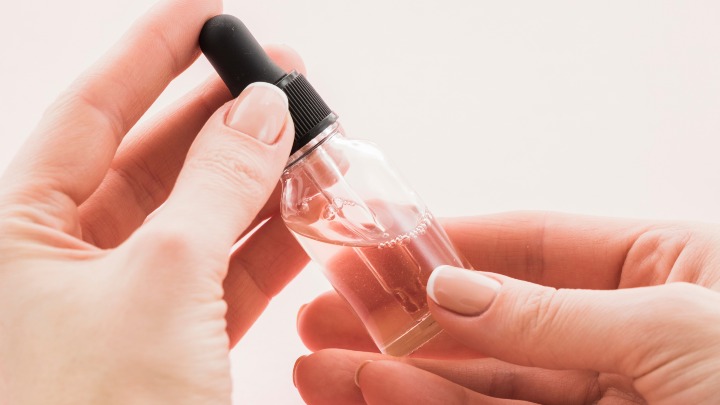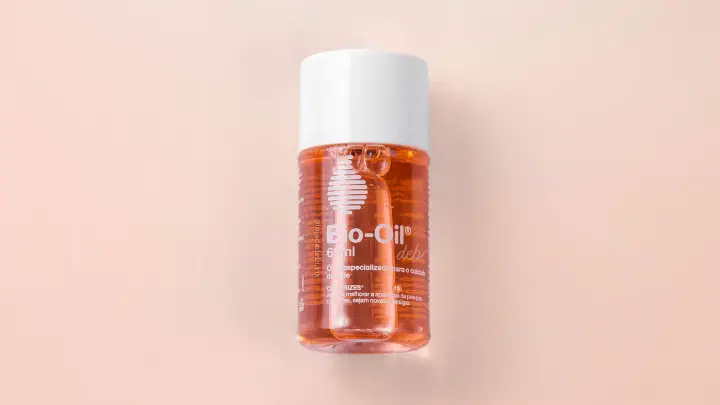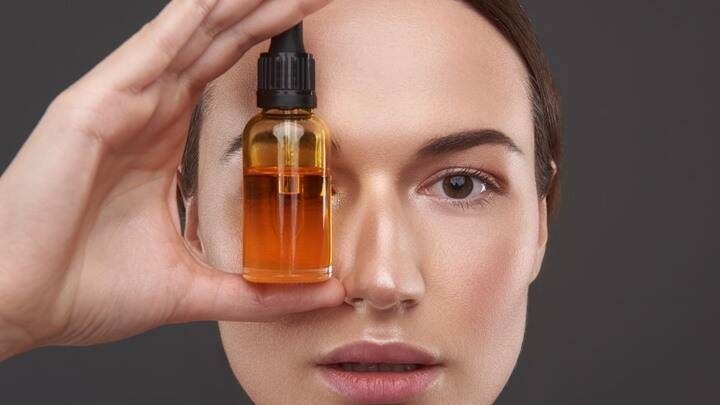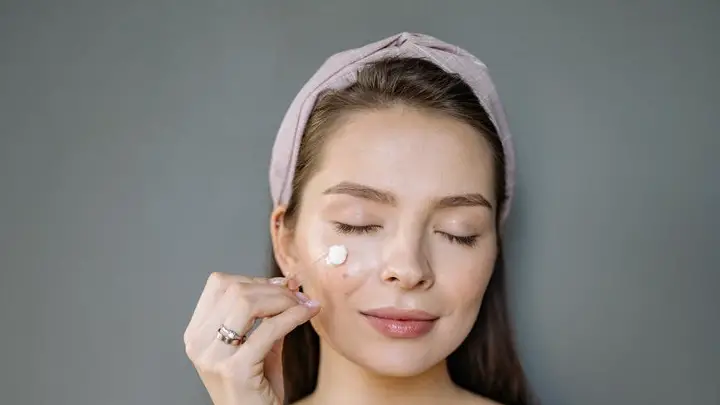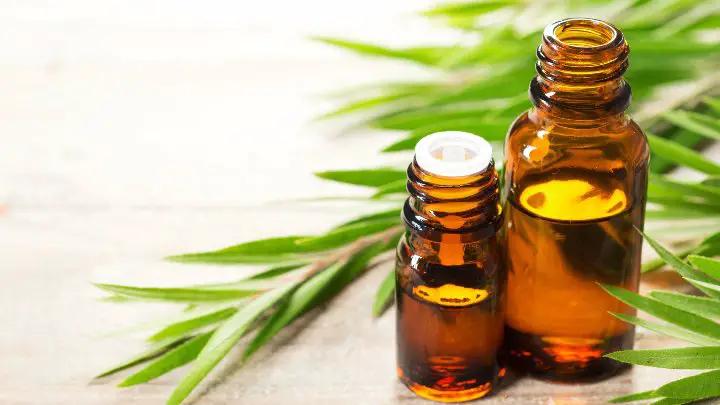Hyaluronic acid (HA) serum is a must-have in every skincare routine and for good reason. Using this water-based, lightweight serum can leave your skin looking plump, healthy, and hydrated.
Because of its incredible ability to bind water to the skin, you might be wondering “when is the best time to use a hyaluronic acid serum in your routine?”.
Is it better to use it before or after moisturizer? Do you need a toner first? Or should you just skip everything else and go straight for HA? Keep reading to find out.
When Should You Use Hyaluronic Acid Serum in Your Routine?
The key to using hyaluronic acid serum is to apply it after cleansing and toning, but before applying any prescription creams, moisturizers, or oils. This way, it can have direct contact with your skin and won’t be diluted by other products.
The exception here is if you’re also using exfoliating serums like AHAs. Since these acids will exfoliate your skin and make it more sensitive, you should always apply hyaluronic acid afterward so it can work on soothing your skin.
Skin Care Routine With Hyaluronic Acid Serum
To set your hyaluronic acid serum up for success, follow these steps:
Cleanse
Use a gentle cleanser with no harsh chemical ingredients. A small amount of cleanser will help remove dirt, oil, and makeup. Remove the cleanser by rinsing it off with lukewarm water and wiping your face with a clean, soft washcloth.
Tone
Apply a small amount of toner to a cotton ball or pad and gently spread it across your face. If you’re new to toners, start by applying just a little to see how your skin reacts.
Apply your hyaluronic acid serum
Take a few drops of your HA serum in the palm of your hand and apply it to your face using your fingertips. Gently press the serum into your skin until it’s fully absorbed.
Moisturize
Wait for 10 minutes, then apply a pea-sized amount of moisturizer on top of the HA serum. This locks in moisture for long-lasting hydration throughout the day or night.
Protect
Apply sunscreen generously and evenly for 15 minutes before heading outside. If you’re using a spray sunscreen, spray it into your hands and then rub it onto your face so you don’t inhale it.
Why Should You Add Hyaluronic Acid Serum to Your Routine?
Hyaluronic acid serum is a product that does nearly everything—it hydrates, smooths, and plumps. Given its many benefits, it makes sense to add hyaluronic acid serum to your routine.
When we’re young, our bodies produce lots of hyaluronic acids, but as we age, production slows down and our skin begins to lose moisture (otherwise known as dehydration). This is when wrinkles and fine lines start to appear on the surface of the skin.
Adding a hyaluronic acid serum into your skincare routine will help to restore moisture to your skin, therefore minimizing wrinkles and plumping up dry skin.
What Are the Benefits of Using Hyaluronic Acid Serum in Your Routine?
It moisturizes skin
Hyaluronic acid is a humectant, so it draws moisture from the atmosphere into your skin. It can hold up to 1,000 times its weight in water, making your skin look more hydrated and radiant.
It’s an antioxidant
Since hyaluronic acid has antioxidant effects, it helps protect against environmental stressors like sun exposure or pollution in the air that can damage our skin cells over time (and cause signs of aging).
It reduces redness and inflammation
Hyaluronic acid helps reduce redness and inflammation in your skin from acne breakouts or other blemishes. This means that your face will clear up much faster.
It reduces fine lines and wrinkles
HA helps with collagen production in the skin and reduces the appearance of fine lines and wrinkles. It also improves your skin’s elasticity by binding with water to plump up your complexion and make you look younger.
Potential Risks and Side Effects
Hyaluronic acid is a natural component of your skin, so the chances that you’ll experience side effects from using hyaluronic acid serum are rare.
However, some people can still experience side effects from using this serum. The most common side effects people complain about are rashes, temporary redness, and stinging.
Also, serums with high concentrations of hyaluronic acid may not be suitable for sensitive skin; if you have sensitive skin, do a patch test before using such serums.
How to Choose a Hyaluronic Acid Serum
Hyaluronic acid serums are available in drugstores, department stores, and online. When selecting a product:
Pick a high-quality product
Hyaluronic acid serums are available in different concentrations. The concentration of hyaluronic acid in a product can vary from 1% to up to 2%. A higher concentration means you need to use less serum to get results.
Look for complimentary ingredients
To get the most out of your hyaluronic acid serum, look for one that contains complementary ingredients like vitamin C or retinol.
Vitamin C can help brighten your complexion, while retinol can help fight the effects of aging by encouraging cell turnover and collagen production.
Avoid parabens and fragrances
These ingredients can irritate your skin and counteract the effects of hyaluronic acid on your skin’s hydration levels. When choosing a hyaluronic acid serum for your routine, you want one that contains as many natural ingredients as possible.
Find an alcohol-free formula if you have dry skin
Manufacturers often use alcohol as an ingredient in serums because it acts as a solvent for other ingredients and helps them penetrate the skin more easily.
However, alcohol can dry out your skin and make it feel tight and uncomfortable. So avoid it at all costs if you have dry skin.
Know what you’re buying
Just because a bottle says hyaluronic acid doesn’t mean it is pure and in its most effective form. Look for the ingredient sodium hyaluronate, which is the most effective form of this substance.
FAQs
How long does it take for a hyaluronic acid serum to work?
4-8 weeks.
Most people see results within 4-8 weeks of applying hyaluronic acid serum daily. If your skin is very dry or wrinkled, then it might take more time before you see any improvement in your skin texture and appearance.
Is hyaluronic acid good for oily skin?
Yes, it is.
Regular use of hyaluronic acid can help your skin retain moisture, keeping it hydrated, smooth, and supple without feeling greasy or sticky. This makes it a good ingredient for oily skin types.
Can you use hyaluronic acid with niacinamide?
Yes, you can.
Hyaluronic acid is a moisturizing ingredient that can hold up to 1000 times its weight in water, while niacinamide is the active form of vitamin B3 and a potent skin-restoring ingredient.
Using hyaluronic acid with niacinamide can be especially beneficial for those concerned about aging prematurely. Both ingredients are anti-aging superstars that can help reduce fine lines, wrinkles, hyperpigmentation, and other signs of aging.
Conclusion
The key to using hyaluronic acid serum is to apply it directly after cleansing and toning, while your skin is still clean. This will ensure that the HA can bind water to your skin and nourish it completely.
Of course, there is an exception to every rule, so if you find that your HA serum works well for you when applied after some products, stick with it.
Thanks for reading.
Visit Serum101 today for more information on hyaluronic acid and other skincare ingredients.
